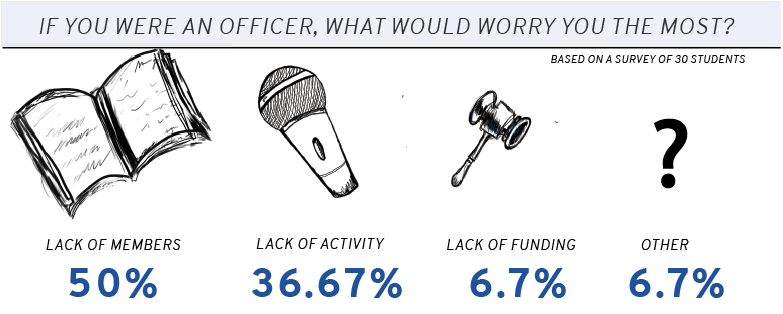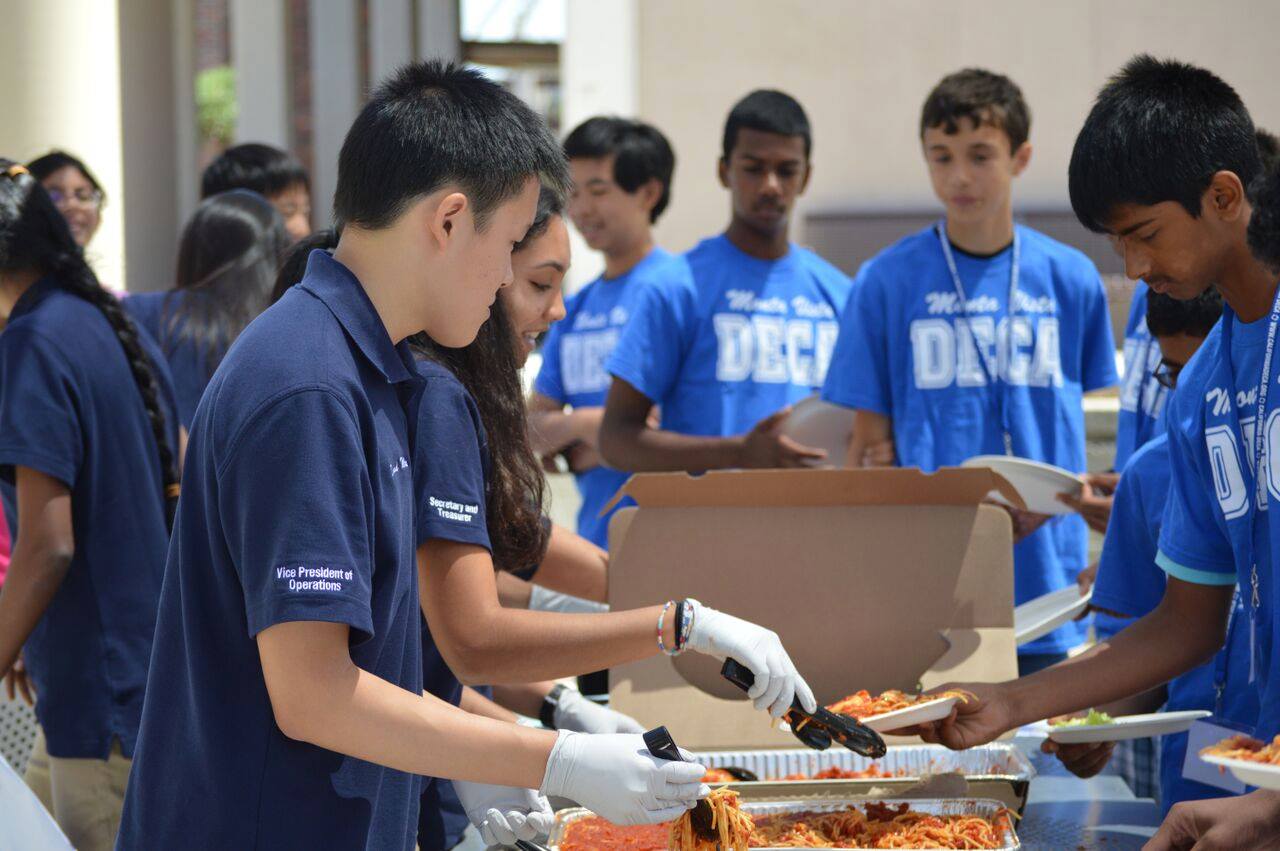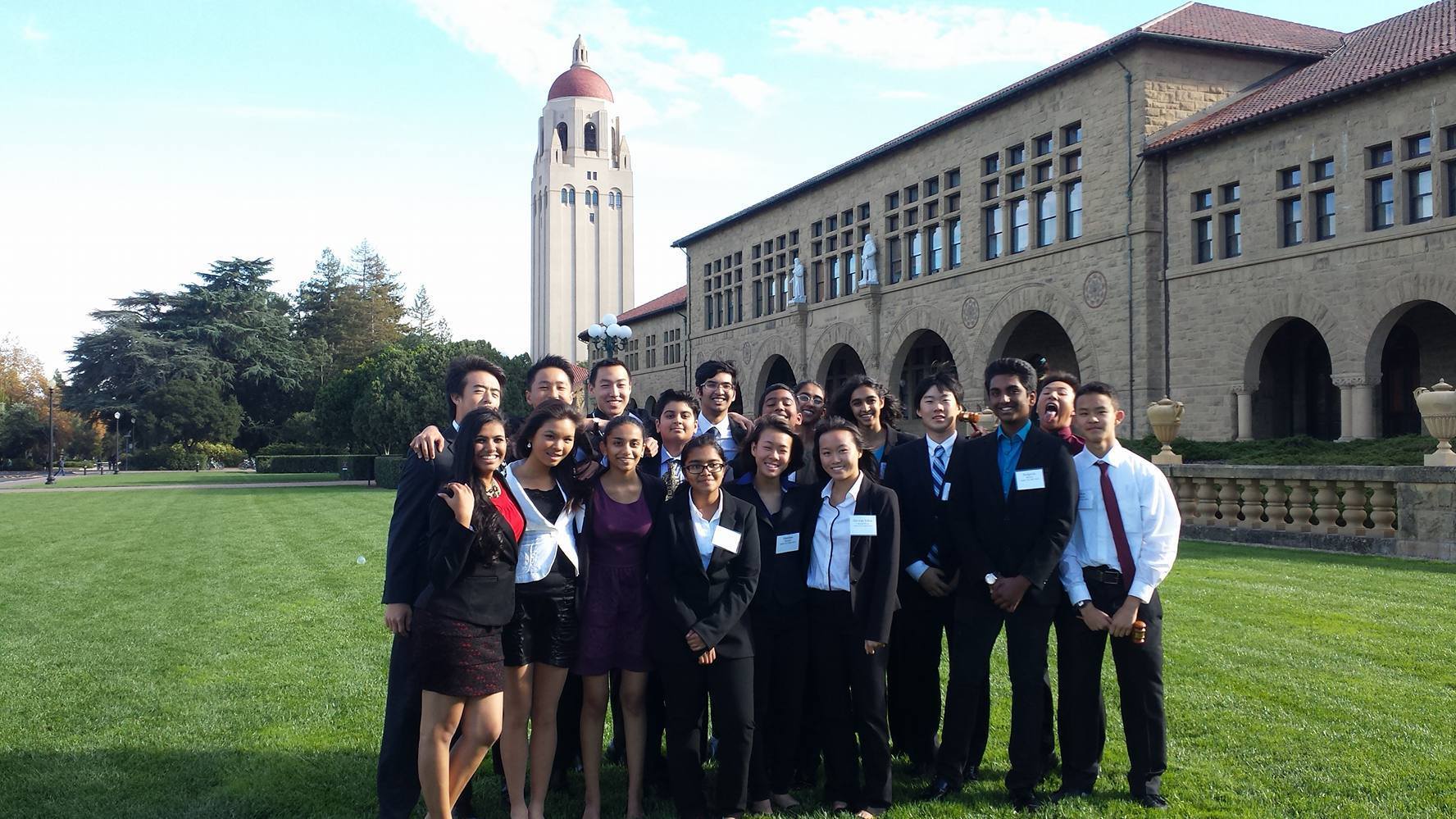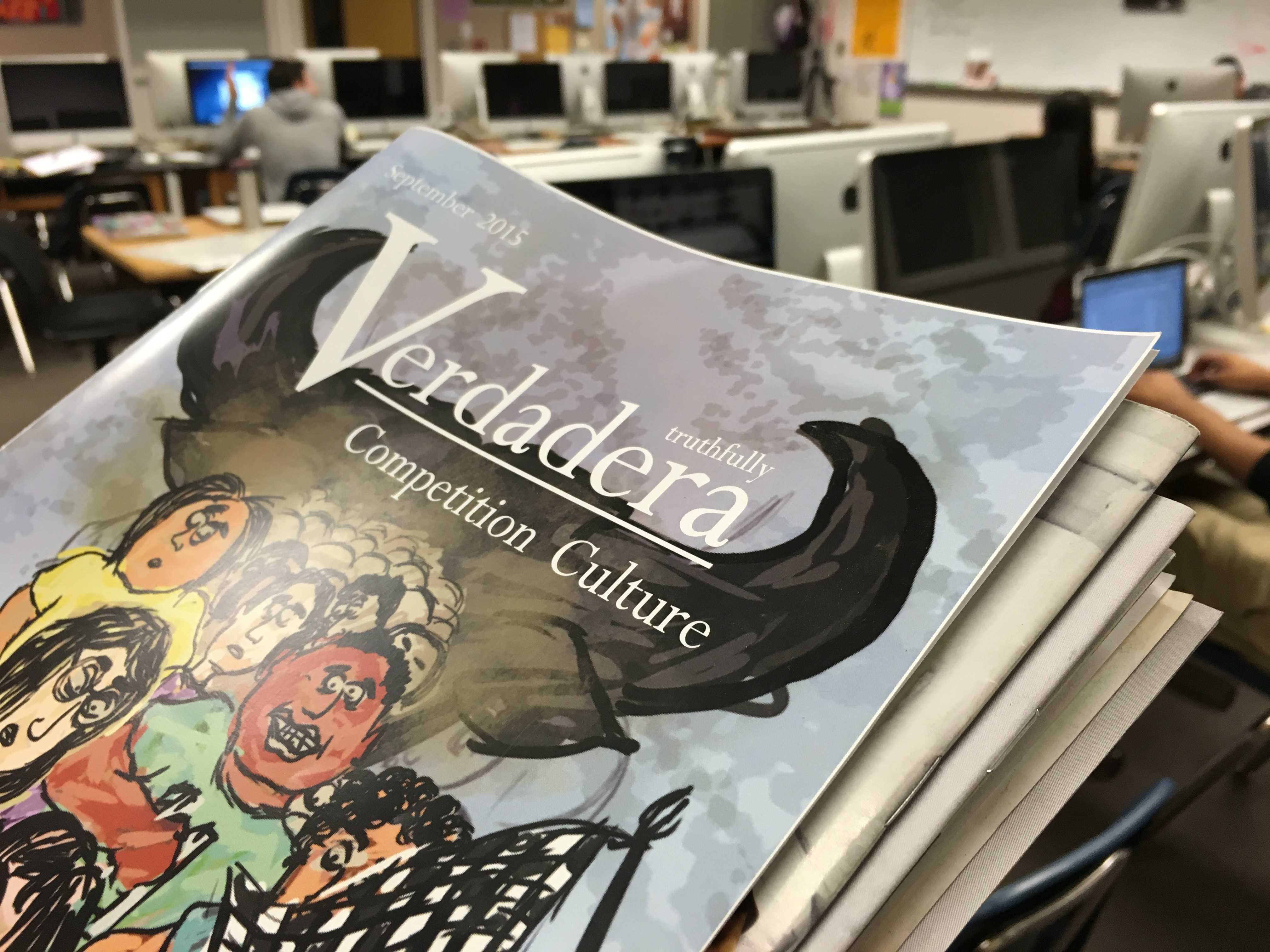Co-written by Stephanie Lam Additional reporting by Ilena Peng
WHEN SENIOR AND FOUR YEAR DECA MEMBER Gloria Zhao received this year’s rooming arrangements for DECA’s annual Silicon Valley Career Development Conference, she had to look at the sheet again to make sure it was the right paper. All the names were listed on one piece of paper.
In previous years, the list had usually taken up two entire pages.
To Zhao, the transition from multiple pieces of paper to only one signified a crushing realization for her: DECA membership was decreasing.
DECA is not the only club that has experienced changes in membership over time. Almost all clubs on campus go through a continuous cycle of receiving and losing members. The result: a rise and fall in club popularity.
“PEOPLE JOIN CLUBS because they think they can get something in return out of it, whether it’s for college applications or for a community they can be apart of,” Zhao said, “When people see the return that they are looking for is not there, they start to not want to join that club [anymore].”
Zhao believes that the most important part of any club’s success is dedicated members. They are the driving force that keeps the spirit of a club alive in the future.
“I think people just don’t know that, it takes the members themselves to make a club great,” Zhao said. “And it’s not the club that give members greatness, it’s the members that give the club its greatness.”
Although members leave their clubs for various reasons, one reason, according to an anonymous senior and former Speech officer, is the competition for officer roles between seniors and non-seniors. Although the senior believes that this is not the case with Speech and Debate, she believes that competition for officer roles can be the cause for declining memberships.
“It’s not common for regular members [to leave] because those members who don’t get an officer position the first year they try, stay in the club and try again,” she said, But for people that are kicked [off the the teams] that’s definitely a reason to leave.”
Current Speech officer sophomore Nikash Khanna also noticed that the dedication of a member depended on whether or not that that particular member was an officer. Khanna personally left other clubs where he did not have an officer position, so he could dedicate more time to clubs where he had that leadership role.

However, even members who have previously dedicated much of their time to a club are not guaranteed to stay in their club. This was the case for junior Tanvee Sinha, who competed in DECA conferences and attended the Saturday study sessions throughout her freshman and sophomore years, but left DECA in her junior year. Her decision to quit was due to the fact that she was required to attend conferences which she felt were expensive. The new rule that members had to be enrolled in business classes also influenced her decision.
“I didn’t take Business my freshman year was because I was doing DECA,” Sinha said, “I was already doing business outside of school, so there was no reason for me to take it in school where I could utilize my time better. Doing [business] in school, I guess, really hindered the interest [in DECA] because people don’t want to take on that other class.”

It’s important for members to be active and committed, but the fall is not just due to the lack of student participation. One factor that decreases club growth is the absence of strong interclub relationships with members and officers.
“The fall of a club is [due to] lack of communication between officers and members, lack of events, lack of promotion and meetings,” Sinha said. “The officers have to be really involved with their participants for the members to still be interested.”
According to co-president of Model United Nations senior Nupoor Gandhi, if a club is successful in accomplishing strong communication and commitment, it can help a club rise in popularity and prestige. Gandhi explained that MUN has gained popularity due to strong officer leadership and structural changes.
“I think [the change] has been very gradual over the years,” said Gandhi, “[For example] my freshmen year, the club was a mess, we really only went to one conference, a lot of them got cancelled. [This year] we’ve implemented a lot of new changes, like more training programs, the officer team is working a lot harder.”
Strong leadership is not the only important factor for the club’s success. MUN’s co-president senior Eric Lee finds membership to play an essential part to MUN’s qualification for the prestigious North American Imitation Model United Nations conference in Washington D.C. and their competitive improvement as a whole.

“It doesn’t really matter what the leadership tries to throw at the students,” Lee said, “It takes members who really do care about what they are doing, and members who will talk to their friends about [the club] and actually spread the word about what they are doing.”
MUN is not the only club to rise in popularity. For years, according to senior Gayathri Kalla, head editor of Monta Vista’s student run publication, Verdadera, had been inactive on campus.
“If you asked anybody [my] sophomore or junior year [about Verdadera], he/she would be like, ‘Yeah, I’ve heard of it…somewhere,'” Kalla said. “The club kind of just fell apart [my junior year]. Nobody was really pushing forward, taking initiative to get things done, get things rolling. It was pretty saddening.”
The inactiveness of the club led her and others to improve the quality of the magazine their senior year. The other factors that helped Verdadera achieve a known presence on campus status- as with MUN- was the new leadership and dedication of their members.
“This year, people are actually talking about Verdadera. I’ve actually had teachers and students say, ‘I saw one of your staff articles,’ or say, ‘I liked the topic you talked about.’ When we ask for submissions, people are really willing to add in their opinion….before [Verdadera] was just kind of there, now it’s becoming something that people actually talk about.”

Changes and challenges are presented to clubs every year- these changes and challenges determine how successful the clubs will be and if they can last through the constantly fluctuating interests of students over the course of several years. Only the fittest will survive.







